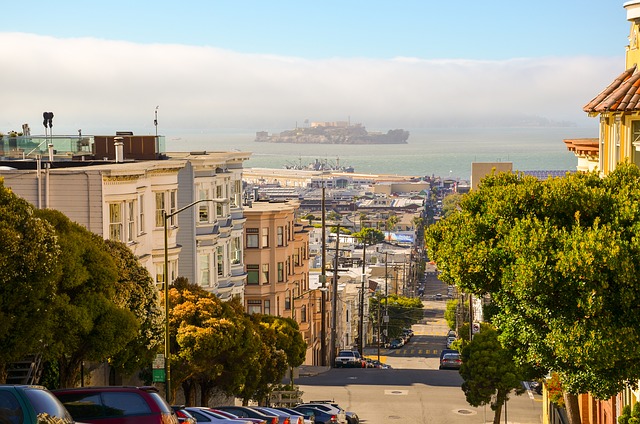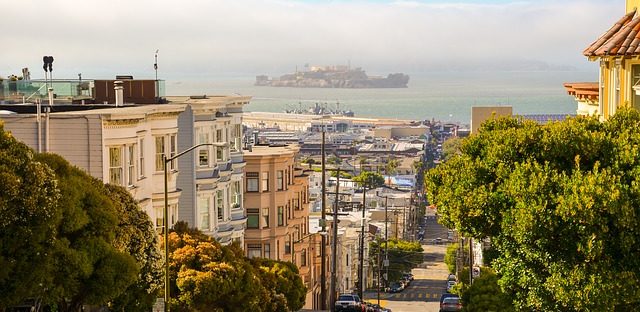- Target: 100% renewable electricity supply community wide by 2030.
- Status: In progress
- RES: Solar power and biogas cogeneration.
- Implementation: San Francisco is a renowned city and county on the central coast of California. In December 2010, a $250,000 grant was awarded to the city from the Sidney Frank Foundation to develop an implementation plan over 12 months to generate 100% of San Francisco’s electricity from renewable sources by 2020 in support of the City’s carbon neutrality goal. By January 2011, the Mayor’s Renewable Energy Task Force was established to develop recommendations to help meet this goal within 10 years. It was headed by the San Francisco Environment Department and comprised of local renewable energy leaders, key stakeholders and other City departments. In 2011, the electricity mix in the city was made up of 16% non-large hydropower renewables, 30% large hydro, 36% fossil fuels, and 18% nuclear.
The Task Force report suggested six strategies to get to 100% renewable power by 2020. First was to increase energy efficiency by promoting energy audits and retrofits through local and state programs; integrating green building and energy labelling; tightening building code energy requirements; and. strengthening retrofit on resale rules. Second was to encourage local renewable energy by streamlining solar permitting and provide online permitting; funding GoSolarSF (the local rooftop solar) incentive program; supporting net metering; developing feed-in tariff for local renewables; integrate renewables on aging downtown distribution grid; and addressing solar system shading. Fourth was to encourage green leases and support community renewable energy legislation on the state level. Fifth was to encourage private sector investment in renewable energy through various measures. And sixth was to expand access to local renewable energy.
Fundamental among these recommendations was the Community Choice Aggregation program (CCA) that allows communities to aggregate the bulk buying power of its citizens to purchase power on the wholesale market and directly from power generators. CCAs give communities the ability to opt out and stay with the local investor owned utility as a provider if they want to. In California, communities have been adopting CCAs to increase their renewable power portfolios and keep more value in the community. San Francisco's CCA program developed CleanPowerSF which today offers a basic plan of 35% renewable power for .25% less than the investor owned utility rates, or a "Super Green" plan for 100% renewable power. As of mid-2013, more than 18.5 MW of in-City renewables had been installed, with 15 MW of solar PV (more than 2,000 systems) citywide and 3.5 MW of biogas cogeneration at the City’s wastewater treatment plants. All public transportation in San Francisco was running on electricity or biodiesel. - Population: 884,363 (2017)
- Area: 231.89 sq mi (600.59 km2)
- Link: San Francisco Climate Action Plan

